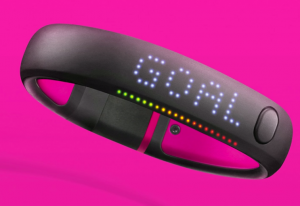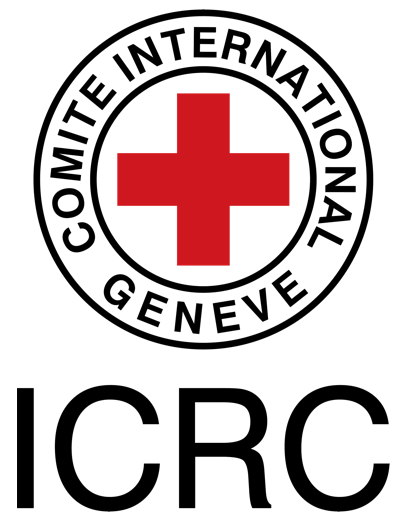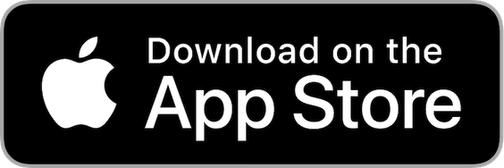Self tracking
Original Editor - Tony Lowe
Top Contributors - Tony Lowe, WikiSysop, Lucinda hampton, 127.0.0.1 and Kim Jackson
Definition[edit | edit source]
Types of device and app[edit | edit source]
Activity trackers - generally the record number of steps taken but also can record elevation gained (number of stairs and floors). Often also estimate a measure of calories burned. Examples include the Fitbit, Nike Fuelband, Jawbone Up,Striiv and Withings Pulse. Modus StepWatch is designed speficially for step and gait analysis in clinical scenarios. Mike Reinold provides a PT's review of these devices.
Meal logging - record daily food intakes through the use of photos odf meals, databases of food types and quantities to estimate calories and nutrients (e.g. the Fitbit food database) and even food scanners to automatically estimate meal make up (e.g. the TellSpec scanner). Generally these tools focus on calorie intake rather than the nutrious nature of the food eaten.
Symptom logging - record symptoms such as pain and send reports to healthcare professionals (e.g. Manage my pain app, CamNtech PRO-Diary).
Medication logging - recording and presenting reminders for medications (e.g. Tonic).
Sleep tracking - measures activity levels and sometimes body temperature and heart rate at night to identify sleep good and bad patterns.
Body health measures - heart rate, skin temperature, perspiration (e.g. the Basis watch), blood pressure (e.g. the iHealth blood pressure monitor), blood oxygen saturation (e.g. the iHealth Pulse Oximeter), heart ECG trace (e.g. Alivecor, CamNtech Actiwave Cardio)
Muscle/exercise feedback - provides a measure of form during exercises (e.g. Athos)
Posture - measures and prompts better spine and shoulder posture (e.g. Lumo Lift and Lumo Back)
Ownership, personal targets, social factors and rewards[edit | edit source]
The on-line support systems offered by devices such as the Fitbit provide several features that may encourage long term behaviour changes towards healthier lifestyles:
- Ownership - ownership of the device and the recorded data displayed within the on-line support system encourages the user commit to long term use.
- Personal targets - allows you to define your own targets and alerts you when these have been achieved.
- Social factors - the ability to link with / follow other users of the tracking system and compare activity levels encourages an element of competition to increase activity scores. Without medical supervision this feature could encourage user over exertion!
- Rewards - for example the Fitbit system offers a range reward badges for the achivement of predetermined levels of activity (e.g. 15,000 daily steps). A review by Laura Kalbag[2] suggests these are carefully designed to be "infrequent enough that they actually feel meaningful (you don’t get a badge for just anything) but not so rare that they feel like hard work".
However there is evidence that suggests these devices "fail to drive long-term sustained engagement for a majority of users"[3]. This is an issue which may or may not be addressed by the Apple Watch that it is anticipated users will want to wear and use, and will seamlessly integrate with other Apple devices for data recording and analysis[4].
Examples of medical use[edit | edit source]
Use in education
[edit | edit source]
Chris Kennedy, Superintendent of Schools in West Vancouver, BC highlights discusses how personal fitness tracking is being used by teachers and could be used by students as part of physical education and linking this to biology studies.
"Just as we want students to take greater ownership of their learning in Science and English and we see that technology as part of this overall plan, the same should be true for health education and physical activity. We want students to own their own data, set goals, not in efforts to compete with others, but to better themselves."[12]
Implications for physical therapy / physiotherapy management[edit | edit source]
- Setting appropriate goals for patient daily exercise levels (e.g. setting an appropriate daily goal for number of steps taken).
- Patient logging of subjective measures for review during consultations e.g. pain, energy levels, feeling of wellness etc.
- Logging daily prescribed exercise completion.
- Setting goals and warning levels for measures with prompts for patients to seek medical attention or return for a follow-up appointment when these are met.
- Managing the competitive instincts of patients exposed to activity leader boards where appropriate.
- Helping the patient establish if they would benefit from viewing leaderboards displaying activity levels of their peers.
Other resources[edit | edit source]
The Quantified Self and the implications for physical therapy / physiotherapy - an article that provides an overview and discusses potential implications for PT / physiotherapy.
References
[edit | edit source]
- ↑ Hansen, Dr. Margaret M., "Self-Tracking, Social Media and Personal Health Records for Patient Empowered Self-Care" (2012). Nursing and Health Professions Faculty Research. Paper 17.fckLR(http://repository.usfca.edu/nursing_fac/17)
- ↑ Laura Kalbag blog post accessed 3rd Dec 2013 (http://laurakalbag.com/six-months-of-the-fitbit-and-the-new-fitbit-aria/)
- ↑ Ledger, D. & McCaffrey, D., 2014, How the Science of Human Behavior Change Offers the Secret to Long-Term Engagement, Endeavour Partners White Paper, accessed 16/03/2015
- ↑ Belluz, J., 2015, Apple is trying to launch a health revolution. Researchers are skeptical., Vox, March 16th, accessed 16/03/2015.
- ↑ Kurti AN, Dallery J., "Internet-based contingency management increases walking in sedentary adults.", J Appl Behav Anal. 2013 Fall;46(3):568-81. doi: 10.1002/jaba.58. Epub 2013 Aug 1.
- ↑ Avril Mansfield, Jennifer S Wong, Mark Bayley, Lou Biasin, Dina Brooks, Karen Brunton, Jo-Anne Howe, Elizabeth L Inness, Simon Jones, Jackie Lymburner, Ramona Mileris1and William E McIlroy, "Using wireless technology in clinical practice: does feedback of daily walking activity improve walking outcomes of individuals receiving rehabilitation post-stroke? Study protocol for a randomized controlled trial", BMC Neurology, 2013, 13:93 (http://www.biomedcentral.com/1471-2377/13/93)
- ↑ Renée V.,Van der Weegen, S., Spreeuwenberg, M., Tange, H., Van der Weijden, T & Witte, L., A Monitoring and Feedback Tool to Support Patients in Achieving a more Active Lifestyle, eTELEMED 2012 : The Fourth International Conference on eHealth, Telemedicine, and Social Medicine (http://www.thinkmind.org/index.php?view=article&articleid=etelemed_2012_6_40_40086)
- ↑ de Blok BM, de Greef MH, ten Hacken NH, Sprenger SR, Postema K, Wempe JB., The effects of a lifestyle physical activity counseling program with feedback of a pedometer during pulmonary rehabilitation in patients with COPD: a pilot study., Patient Educ Couns. 2006 Apr;61(1):48-55. Epub 2006 Feb 7. (http://www.ncbi.nlm.nih.gov/pubmed/16455222)
- ↑ Tabak, M., Vollenbroek-Hutten, M.,van der Valk, P., van der Palen, J. and Hermens, H., A telerehabilitation intervention for patients with Chronic Obstructive Pulmonary Disease: a randomized controlled pilot trial, Clin Rehabil November 29, 2013 (http://cre.sagepub.com/content/early/2013/11/27/0269215513512495.abstract)
- ↑ de Jongh T, Gurol-Urganci I, Vodopivec-Jamsek V, Car J, Atun R., Mobile phone messaging for facilitating self-management of long-term illnesses. Cochrane Database Syst Rev. 2012 Dec 12;12:CD007459. doi: 10.1002/14651858.CD007459.pub2.
- ↑ Swan, M. Health 2050: The Realization of Personalized Medicine through Crowdsourcing, the Quantified Self, and the Participatory Biocitizen, J. Pers. Med. 2012, 2(3), 93-118; (http://www.mdpi.com/2075-4426/2/3/93)
- ↑ Kennedy, C. 2014, "Physical Activity Training is Going Digital", Culture of Yes, http://cultureofyes.ca/2014/02/20/physical-activity-training-is-going-digital/
- ↑ Mehta, R, The Self-Quantification Movement – Implications For Health Care Professionals, SelfCare 2011;2(3):87-92 (http://www.selfcarejournal.com/view.abstract.php?id=10051)
- ↑ J. Adam Noah, David K. Spierer, Jialu Gu, and Shaw Bronner, Comparison of steps and energy expenditure assessment in adults of Fitbit Tracker and Ultra to the Actical and indirect calorimetry, Journal of Medical Engineering & Technology, October 2013, Vol. 37, No. 7 , Pages 456-462 (http://informahealthcare.com/doi/abs/10.3109/03091902.2013.831135)
- ↑ Takacs J, Pollock CL, Guenther JR, Bahar M, Napier C, Hunt MA., Validation of the Fitbit One activity monitor device during treadmill walking., J Sci Med Sport. 2013 Oct 31 (http://www.ncbi.nlm.nih.gov/pubmed/24268570)
- ↑ Luis J. Mena, Vanessa G. Felix, Rodolfo Ostos, Jesus A. Gonzalez, Armando Cervantes,1 Armando Ochoa, Carlos Ruiz, Roberto Ramos, and Gladys E. Maestre, Mobile Personal Health System for Ambulatory Blood Pressure Monitoring, Computational and Mathematical Methods in Medicine Volume 2013 (2013), Article ID 598196, 13 pages (http://www.hindawi.com/journals/cmmm/2013/598196/)







